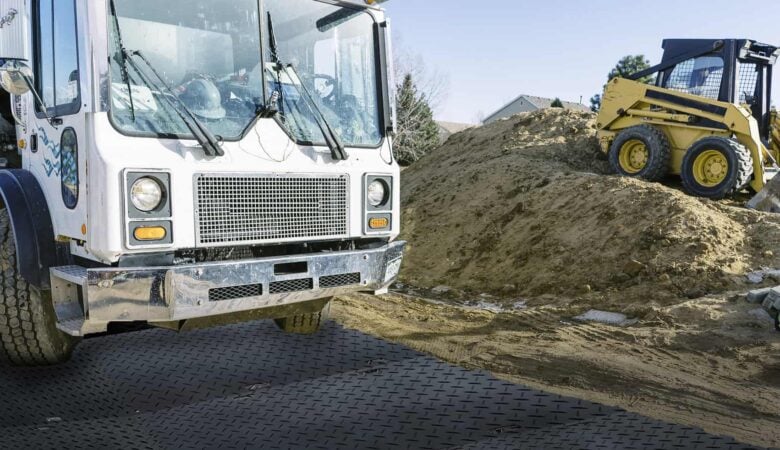Using a flatbed trailer to haul heavy construction equipment and other oversized loads is one of the simplest solutions for what can often be a tough problem. Still, the actual processes of rigging and loading are not so simple. Engineers take into account complex mathematical formulae applied to rigging and loading for the purposes of making sure everything stays safe for the duration of a move. Those mathematical equations are used to figure out everything from the best way to move a load to how to secure it effectively.
Mytee Products’ inventory of flatbed rigging supplies includes everything the flatbed trucker needs to work safely. In addition to standard cargo control equipment such as chains and straps, we also carry turnbuckles, rope clips, wire rope thimbles, block and tackle equipment, wire rope, and more.

Basic Principles You Should Know About Rigging
So, just what goes into safe and effective flatbed rigging? A lot, quite frankly. Here are just a few of the basic principles engineers should pay attention to:
Load Weight
Just about everything having to do with flatbed trucking starts and ends with the weight of the load. Tractors are only capable of hauling so much weight safely, and cargo control supplies are rated according to how much weight they can effectively handle. Before any oversized load can be configured for transport, engineers need to know how much it weighs.
Permitted Axle Weight
America’s roads are rated according to how much. weight they can safely handle. That weight is expressed as a maximum permitted axle weight. Engineers preparing to move oversized loads have to consider the routes taken by truck drivers and the permitted axle weights on those routes. Unfortunately, sometimes a heavy load requires taking an indirect route in order to stay safe.
Center of Gravity
Any experienced flatbed truck driver will tell you that getting the center of gravity right is critical to safe loading. Being off just a few inches can make hauling an oversized load more difficult and dangerous than it needs to be.
Road Surface Grades
Road surface grades can add to the challenge of hauling heavy loads. Flatbed rigging takes into account road grades for cargo control purposes. For example, a truck that will be traversing steep grades in the Sierra Nevada will need extra rigging to keep the load in place under additional stress.
Turning Requirements
Tight turns are another problem for oversized loads. Engineers have to account for turning radii along certain portions of the route with the knowledge that tight turns put additional stress on both trailers and the loads they are carrying.
Overhead Height Restrictions
Lastly, flatbed rigging must account for overhead height restrictions presented by bridges and overpasses. As with permitted axle weights, height restrictions may partially determine the route taken by a trucker hauling an oversized load.
As you can see, there is more to flatbed rigging than simply placing a load on the back of a trailer and tying it down. A lot of work goes into making sure loads get where they are going safely, especially when those loads are oversized or particularly heavy.
Conclusion
As a company specializing in the trucking industry and its associated equipment. We are committed to making sure flatbed truckers have the equipment and supplies they need for flatbed rigging and cargo control. We invite you to browse our entire inventory of rigging supplies and cargo control equipment before you make next purchase.
All products sold by Mytee meet or exceed industry standards and regulations. We carry only the highest quality products from brands you trust.













